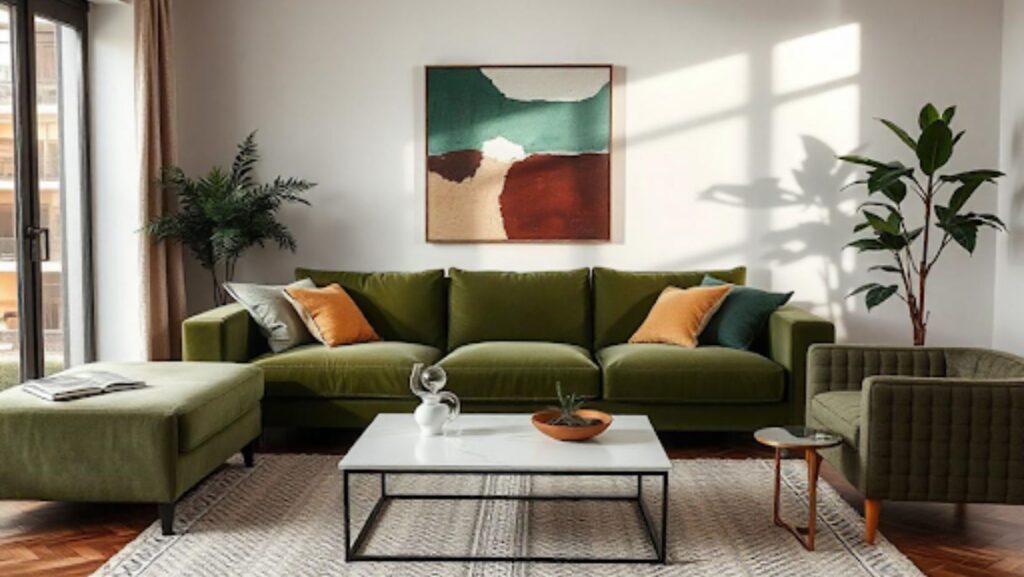
Room planner furniture is typically software application or online platform that allows you to create 2D or 3D floor plans of your room, where you can virtually place, move, and resize furniture to find the most efficient and aesthetically pleasing arrangement.
Some of the best room planner tools include popular platforms like SketchUp, Roomstyler, and IKEA’s Home Planner, but there are numerous other options available. These tools can be particularly useful for individuals who are designing a new space or for those looking to reimagine their existing interiors without the hassle of moving heavy furniture repeatedly.
Benefits of Using a Room Planner
1. Visualizing the Layout
One of the most significant benefits of using a room planner for furniture arrangement is the ability to visualize how different pieces will look and function in the space. Often, when we rearrange furniture in a real-life setting, it can be challenging to imagine how certain configurations will affect the flow of the room. A digital planner removes this uncertainty by allowing you to see a representation of your layout before making any actual changes.
2. Maximizing Space Efficiency
Room planners can help you make the most of the available space, especially if you are working with smaller rooms or have a limited amount of square footage. The tool allows you to experiment with various furniture arrangements and scale down or rearrange items to ensure optimal use of space. Additionally, room planners can highlight areas that may be underutilized, prompting you to make changes that improve functionality.
3. Avoiding Costly Mistakes
Purchasing furniture that doesn’t fit well or doesn’t suit the space can be expensive and frustrating. A room planner gives you the opportunity to test out different furniture pieces and layouts virtually, ensuring that each item you buy will complement the room. This way, you can avoid costly mistakes like purchasing furniture that is too large, too small, or out of place.
4. Time Efficiency
Traditionally, designing a room involved rearranging furniture physically, which could be time-consuming and exhausting. Room planners eliminate this need, allowing you to make quick changes at your convenience. This means that you can experiment with multiple configurations in a short period of time without having to move furniture repeatedly.
- Creative Freedom
Room planners provide users with the freedom to be creative without any pressure. They allow you to test bold ideas—such as unconventional furniture placements or mixing contrasting styles—without any fear of making permanent changes. Once you’re satisfied with your design, you can execute it confidently, knowing it will work well in your space.
Key Factors to Consider When Using Room Planner Furniture Tools
While room planners can be incredibly helpful, there are several factors to keep in mind to ensure you get the best results from your design efforts.
1. Accurate Room Measurements
One of the most important aspects of using a room planner is ensuring that the room’s dimensions are accurately input into the tool. The best room planner apps allow you to input the exact measurements of your space, including walls, windows, doors, and other architectural features. Accurate measurements are key to ensuring that the furniture you choose will fit properly and that you can arrange it in a way that makes the most sense for your space.
2. Furniture Dimensions
Just as room measurements are important, knowing the dimensions of your furniture is equally critical. Be sure to measure your existing furniture—or plan to include dimensions of furniture you wish to purchase—before starting your design. This helps you avoid creating layouts that look great on-screen but won’t work in reality.
3. Flow and Function
When planning the layout of a room, always keep in mind the flow of traffic and the function of the room. Avoid cluttered spaces where furniture obstructs pathways, and ensure that each piece serves a practical purpose. For example, in a living room, you might want to arrange seating to encourage conversation while maintaining easy access to frequently used areas like side tables or TV units.
4. Style and Aesthetic
Another key consideration when planning a room layout is the style and aesthetic of the furniture. Whether you’re designing a contemporary, minimalist, or traditional space, room planners allow you to mix and match different furniture pieces, colors, and textures to find the right balance. Many room planners come with preloaded design templates or furniture pieces that can help you envision your style more easily.
5. Lighting and Ventilation
The way light interacts with the room can have a huge impact on how it feels. When planning furniture placement, make sure to consider the placement of windows and light fixtures. Avoid placing furniture in a way that blocks natural light or restricts airflow. A well-lit and well-ventilated room can feel much more comfortable and inviting.
Practical Tips for Using Room Planner Furniture Tools
- Start with a Clean Slate: Clear out the room in your planner so you can begin with a blank canvas. This will allow you to focus purely on furniture arrangement without being influenced by existing elements.
- Experiment with Different Layouts: Try multiple layouts to see which one feels most comfortable. Don’t hesitate to move furniture around several times to explore different possibilities.
- Group Furniture Logically: Keep similar pieces together. For example, place a sofa and coffee table within close proximity in a living room or arrange the bed, nightstands, and dresser logically in a bedroom.
- Consider Scale and Proportion: While it may be tempting to add lots of furniture to fill space, remember that balance is key. A large room with a few select pieces can feel more spacious than a crowded room with excessive furniture.
Conclusion
Room planner furniture tools have transformed the way we approach interior design by offering a more efficient, flexible, and visually-driven way to plan our spaces. Whether you are designing a single room or tackling an entire home, using a room planner can help you achieve a functional, aesthetically pleasing layout without the need for constant rearranging or costly mistakes. By considering the key factors such as accurate measurements, furniture dimensions, and the room’s function and flow, you can create spaces that are both beautiful and practical. So, if you’re ready to make the most of your space, start experimenting with a room planner today and discover the possibilities that await you.














